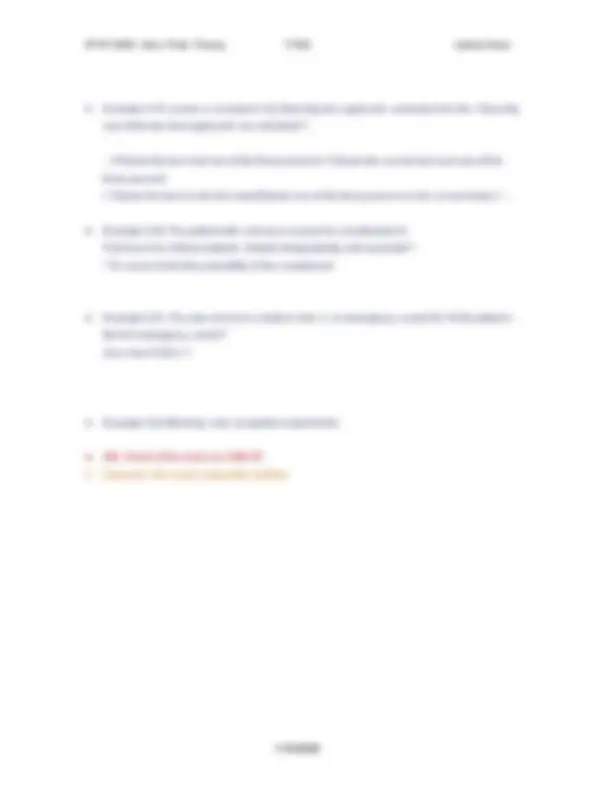



Study with the several resources on Docsity

Earn points by helping other students or get them with a premium plan


Prepare for your exams
Study with the several resources on Docsity

Earn points to download
Earn points by helping other students or get them with a premium plan
Community
Ask the community for help and clear up your study doubts
Discover the best universities in your country according to Docsity users
Free resources
Download our free guides on studying techniques, anxiety management strategies, and thesis advice from Docsity tutors
An introduction to probability theory, focusing on the multiplicative and additive laws of probability and the event composition method. Theorems, proofs, examples, and exercises related to these concepts.
Typology: Assignments
1 / 2

This page cannot be seen from the preview
Don't miss anything!


STAT 3401, Intro. Prob. Theory 16/22 Jaimie Kwon
à Proof: follows from the definitions à Applying it multiple times, we can have results like P(A 1 ∩A 2 ∩…∩Ak)= P(A 1 )P(A 2 | A 1 )P(A 1 | A 1 ∩ A 2 )…P(Ak|A 1 ∩ A 2 ∩… ∩ Ak-1)
à Proof: inspection of the Venn diagram à P(A∪B∪C)=?
à Proof: use the previous theorem. ♦ HW: some of the exercises 2.66~ ♦ Keywords: the multiplicative & additive law of probability;
♦ Example 2.17. Political composition of a city and their support of the bond issues R vs. D (40% vs. 60%), P(F|R)=.7 and P(F|D)=.8. What is P(F)?
♦ Example 2.18. Birthday problem. We know P(A)=.5886. What’s P(B)=P(A’)?
à Define the experiment à Visualize the nature of the sample points. Identify a few to clarify your thinking. à Write an equation expressing the event of interest, say A, as a composition of two or more events, using unions, intersections and/or complements. (hardest) à Apply the laws of probability to the compositions to find P(A)
STAT 3401, Intro. Prob. Theory 17/22 Jaimie Kwon
♦ Example 2.19. (same as example 2.12) Selecting two applicants randomly from five. P(exactly one of the two best applicants are selected)=?
.. =P(draw the best and one of the three poorest) + P(draw the second best and one of the three poorest) = P(draw the best on the first draw)P(draw one of the three poorest on the second draw) + …
♦ Example 2.20. P(a patient with a disease respond to a treatment)=.9. P(at least one of three patients, treated independently, will respond)=?
♦ Example 2.21. P(a new arrival at a medical clinic is an emergency case)=1/6. P(r'th patient is the first emergency case)=? Also check P(S) = 1
♦ Example 2.22 (Monkey color recognition experiment)
♦ HW. Some of the exercises 2.86~ ♦ Keywords: the event-composition method